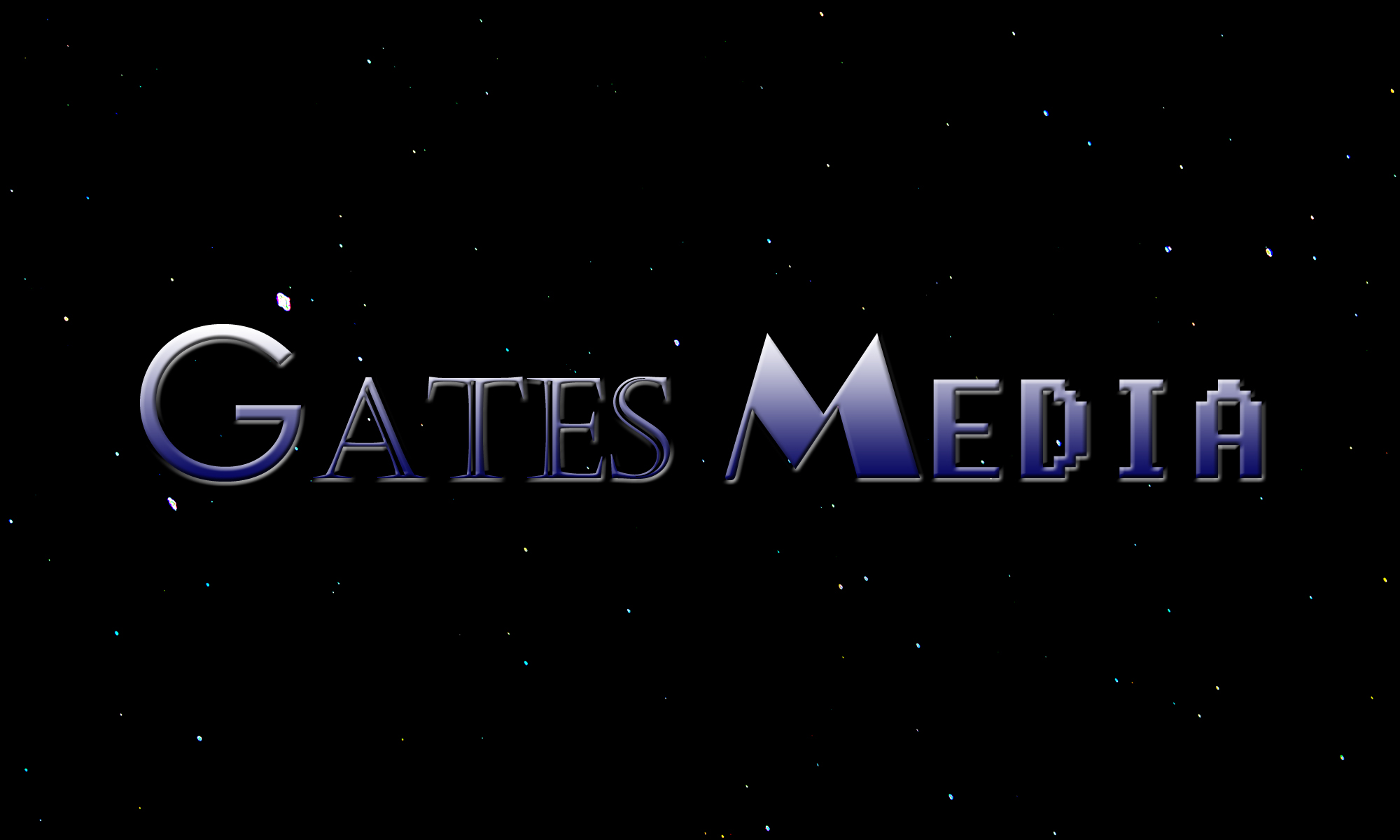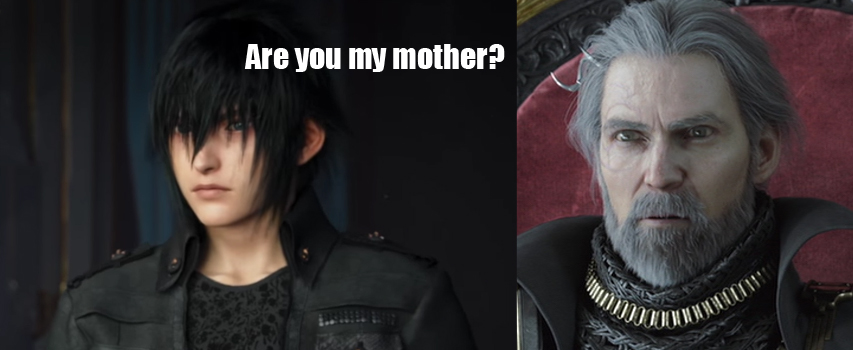Transcript:
Kingsglaive: Final Fantasy XV and Final Fantasy VII: Advent Children get compared a lot. They both contain extravagant action scenes, were created by Square Enix, and are based on games in the Final Fantasy franchise. Both also receive criticism for having convoluted and confusing plots. But how justified is this comparison? In a previous video, I talked about how Kingsglaive’s visuals contradict its audio and its general visual chaos. Is that all that makes its story incoherent? Does Advent Children have the same problem with visual communication? Let’s compare three aspects of their stories to find out.
Both films feature protagonists with inner conflicts that they must confront. Nyx in Kingsglaive deals with the deaths of his mother and sister and his status as an immigrant… supposedly. The film shows the source of Nyx’s torment through a poster board in his room, which has photos of his family and characters likely drawn by his sister. Nyx also watches a cartoon on TV that features the same characters. Nyx, however, looks at these things with indifference… or maybe rage. Is he tormented, or is he just eating something? Stop changing the camera angle every two seconds!
He seems to have a fear that his past will lead to his death. Maybe? What prompted him to think this thought? He’s just sitting on the steps, and then, some guy falls out of the sky and vomits. Nyx hears his sister’s voice throughout the film, but these memories only cause mild inconveniences.
Similarly, guards only occasionally taunt his immigration status. The rest of the time he just plows through them. [“Hey, hey, hey, hey, hey, hey! Wait a minute! Stop!”] Despite the suggestion that he must overcome these problems, we don’t ever know why they’re problematic… except when he decides Princess Luna needs to know about his sister mid-chase scene.
In contrast, Cloud’s inner torment in Advent Children is clearly a problem that he must solve if he expects to survive the film. Cloud deals with the deaths of his friends Zack and Aerith and his affliction with an incurable disease called geostigma. He experiences intrusive visions from his past at inopportune times. He pushes his surviving friends away out of guilt. He feels pain and bleeds blue ink from geostigma. Cloud’s battle against his inner demons makes it difficult for him to fight the enemies resurrected from his past in reality. His inner problems integrate so well with his external struggles that battling his enemies and reuniting with his friends is synonymous with letting go of his past and finding his place in the present.
Kingsglaive and Advent Children also have bad guys that must obtain something important to fulfill their evil plans. In Kingsglaive, the empire Niflheim wants to steal the kingdom of Lucis’ Crystal, which it uses to defend its capital city Insomnia with a magical wall; obtain a magical ring from Lucis’ King Regis; kill and/or kidnap Lucis’ ally Princess Luna; and/or kill King Regis. If that previous semblance of a sentence didn’t clue you in, Kingsglaive doesn’t explain why Niflheim or Lucis care about any of these goals. Let’s look specifically at the Crystal, which at first glance appears to be the most powerful object in the movie. The Crystal is so important in fact that it’s the first thing that we see in the film.
Unfortunately, the scenes during which Niflheim steals it are so chaotic that they render its importance questionable at best. During a distraction peace treaty, Niflheim’s troops enter a smoky room outside the Crystal’s hold. [“The Crystal! They’re after the Crystal!”] The troops break into a room with a control board and a vault door leading to the Crystal. They blow up the control panel, which causes Insomnia’s wall to fall. [“The wall, it’s gone.”] Later, Niflheim’s chancellor and emperor watch one of their ships carry the Crystal away.
It sounds straightforward… until you mix it with King Regis’ battle against robots and a menacing suit of armor and Nyx’s fight with traitorous teammates and a giant octopus. Additionally, the Crystal doesn’t look like a crystal, and this movie doesn’t like to hold any of its shaky and poorly chosen shots for more than two seconds. There’s a reason why the characters narrate this entire heist. “They broke into a room with a… panel? Where’s the Crystal?” “What is this black thing covered in smoke?” [“The Crystal!”] “Oh, you mean this window divider is the Crystal?”
The aftermath doesn’t stress the importance of this event either. No one cares. Nyx and Luna point out that the wall has fallen before they return to killing traitors. The ambassador and the emperor of Niflheim talk about what happens next. “The Crystal…! Well, let’s go see if King Regis is still alive.” With the editing and cinematography, stealing the Crystal has as much weight as saving Luna from octopods and King Regis fighting for his life. In the end, do any of them matter? The Crystal’s gone. Regis dies. Luna throws herself out of an airship and yet is entrusted with a magic ring that no one can wear.
Advent Children’s antagonist Kadaj wishes to find the remnants of Jenova, an alien being that caused a catastrophe long ago. When Kadaj discovers the alien matter hidden in plain view, the film highlights its importance by making an event out of it. The possessor, Rufus, and Kadaj attract the attention of almost every major member of the cast when Rufus tosses Jenova’s remains off a building, and he and Kadaj jump after them in slow motion. Kadaj tries to grab the box out of the air while Rufus shoots at it.
This scene occurs between two fight scenes, but they all feel very different, which makes it stand out. This scene features a desperate few seconds dragged out into almost a minute. The previous scene shows Cloud rediscovering friendship power, and the next has a high-speed motorcycle battle. While we don’t know until the end of the movie what Kadaj will do with Jenova, the dramatic visuals in this scene foreshadow the importance of him obtaining it.
Finally, the protagonists in both films must follow the clues to reach their goals and solve problems. Nyx tends to just know things for no reason. [“Your hairpin. They’re tracking it. Give it to me.”] [“Pelna, get out of there! It’s a trap!”] At one point, Nyx discovers a pattern on an enemy monster and somehow makes the connection that it’s attracted to a hairpin that Luna wears despite neither of them bearing any resemblance to one another. Similarly, he somehow determines that a trap octopus monster is onboard an airship in response to his teammate observing enemy guards. These are relatively minor problems in comparison to Nyx’s unexplained faith that a suicidal woman, a ring that kills everyone who wears it, and an absent prince have more importance to the future that he wants to save than an entire city of people who might have lived in it.
In contrast, the characters in Advent Children know surprisingly little about anything. [“So what’s going to happen now?”] [“Where’s Mother?”] [“Kadaj, what is he?”] [“Who’s that?”] [“What’s this stuff about Mother?”] [“What do you mean?”] Cloud seems clueless as to how Kadaj will reincarnate Sephiroth right up until Kadaj shoves Jenova cells in his chest. He doesn’t know the cure for geostigma until he’s cured. He doesn’t even seem know what happens at the end of the movie. [“It’s like she said: ‘Wait here and Cloud will come back.'” …] The film provides visual clues for the audience to interpret what happened, but the characters don’t usually do this themselves, at least not audibly.
This final point sums up what Advent Children and Kingsglaive do that makes their stories confusing to follow. They depict two visual storytelling extremes. Advent Children shows all its clues but rarely interprets what they mean audibly while Kingsglaive states what difficult to decipher and non-existent visual clues mean even when that interpretation doesn’t make sense. I’ll let you decide if a blank stare is a preferable explanation to: [“Your hairpin. They’re tracking it. Give it to me.”]
So how do their fight scenes compare? That’s a subject for another video. Talk at you next time.
[“A man’s past is his pride.” “No, my pride is shaping the future.”]

